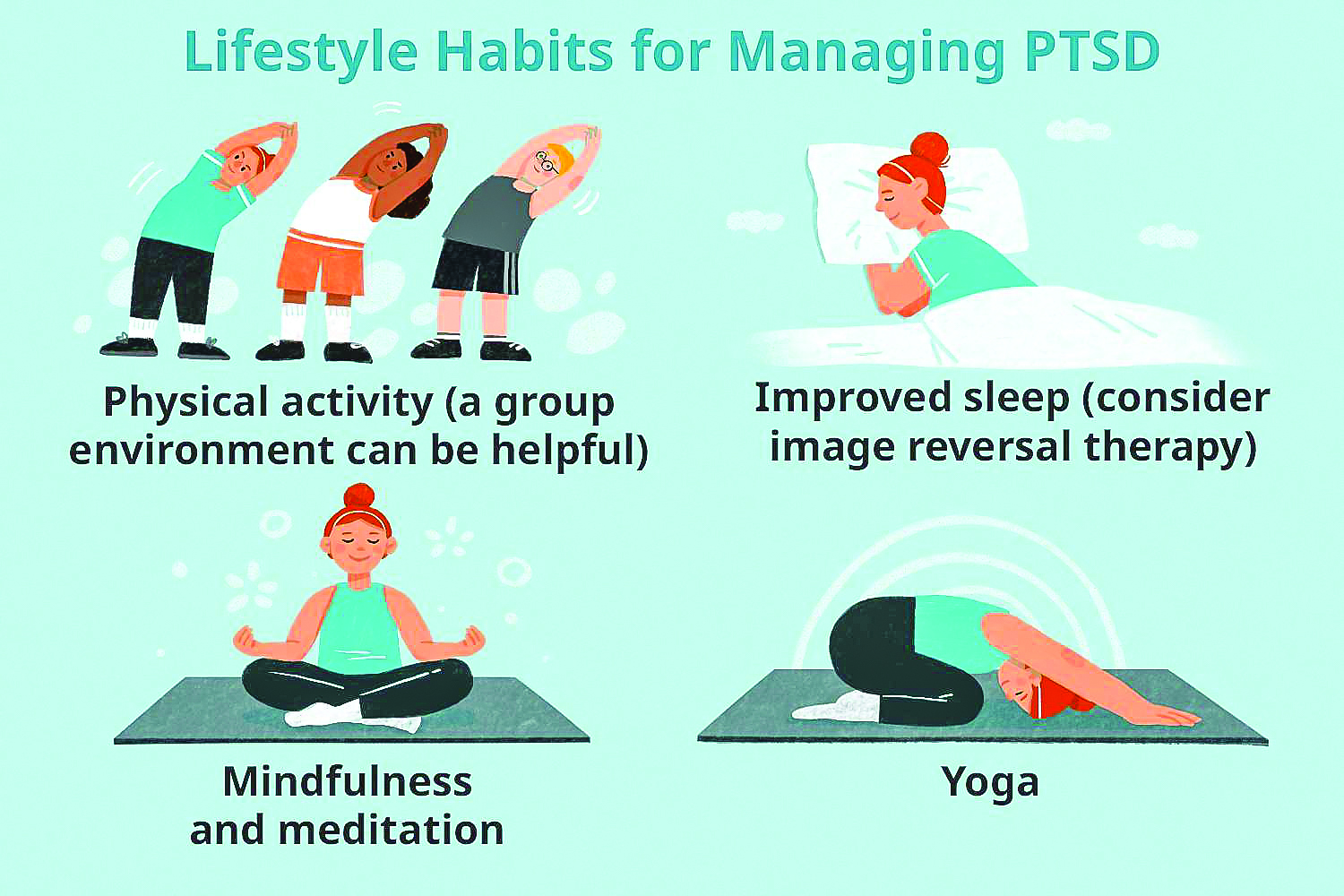A guideline development panel consisting of health professionals from the disciplines of psychology, psychiatry, social work, and family medicine as well as community members who had PTSD, worked together to lay down the best treatment options for PTSD under supervision, American Psychological Association. These were further adopted as APA policy in February 2017.
The following therapies are recommended by these guidelines:
Pharmacotherapy
With conditional strength of recommendation, the panel suggest that a few medications like fluoxetine, paroxetine, sertraline, and venlafaxine can be utilized to improve PTSD symptoms.
Cognitive behaviour therapy
CBT stemming from emotional processing theory and social cognitive theory can be utilized to bring about effective changes in PTSD patients. CBT primarily revolves around the triangular relationship between thoughts, feelings and behaviour. It involves teaching the patient to dig out deep-seated cognitive distortions by observing and reevaluating basic assumptions, automatic negative thoughts and thinking patterns. Following identifications of these unhelpful thought patterns, patients are taught to create alternative thoughts and thus lay the foundations for new and positive thought patterns leading to symptomatic improvement.
Cognitive processing therapy
Cognitive processing therapy starts with trauma processing by utilizing certain tools such as written descriptive details. The therapist utilizes multiple techniques like Socratic questioning to identify maladaptive thought patterns. Once these patterns are identified patient is taught to re-evaluate and modify beliefs. These adaptive strategies are then further utilized to improve quality of life.
Cognitive therapy
Cognitive therapies primarily involve understanding the basis of traumatic memories and the changes it has brought about in emotions. This helps the patient to understand the exaggerated feeling of threat and hypervigilance. An autobiographical account of an experience written and processed by the patient with the help of a psychotherapist brings changes in the mindset and stops the worrisome behaviour pattern.
Prolonged exposure therapy
Includes 90-minute-long sessions, typically spread in 9-12 sessions over 3-4 months. The psychotherapist begins with an assessment and treatment plan. Following this they psychoeducate patients and teach deep breathing exercises and other techniques to reduce anxiety. Imaginal exposure or in vivo exposure based on the requirement can be utilized as a stimulus for exposure.
Brief eclectic therapy
Typically involves 30-45 min sessions usually scheduled as one session per week. Brief eclectic therapy primarily incorporates a psychodynamic approach with an emphasis on negative emotions of shame and guilt. Treatment begins with psychoeducation and a brief description of the traumatic event. Following this, the patient is allowed to reexperience those traumatic moments in a safe and calm environment. A therapist helps the patient to identify and manage emotions coming out of these experiences and relaxation exercises are practised to reduce anxiety. Once the patient begins to master the techniques more exploration is done. The therapy ends with a release prevention plan In order to prevent any future mishaps.
Eye movement desensitization and reprocessing therapy
Usually involves 10-12 sessions delivered on a weekly basis. It consists of five phases going from history taking, preparing of client, assessment of target memory, processing the memory to adaptive resolution to final evaluation of treatment results. Multiple techniques and tools like desensitization, installation, body scan, VOD scale etc. are utilized for therapy.
Narrative exposure therapy
Extremely helpful techniques especially for people. Suffering from complex or multiple trauma. Often involves 10-12 sessions. It involves creating a chronological narrative of the patient’s life with a focus on traumatic events. Making the memory of traumatic episodes redefine and understood.
Prolonged exposure to cognitive restructuring
Combinations of these two therapies are strongly recommended by APA guidelines.
Dr. Meenakshi Jain
Assistant Professor
Psychiatry























